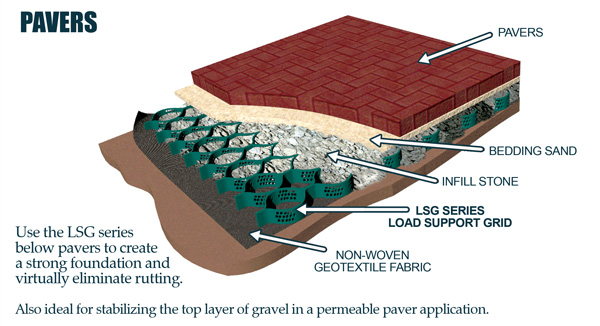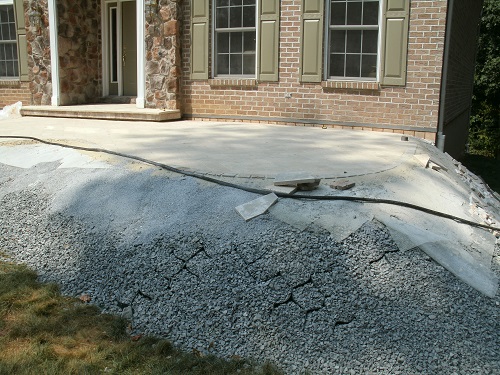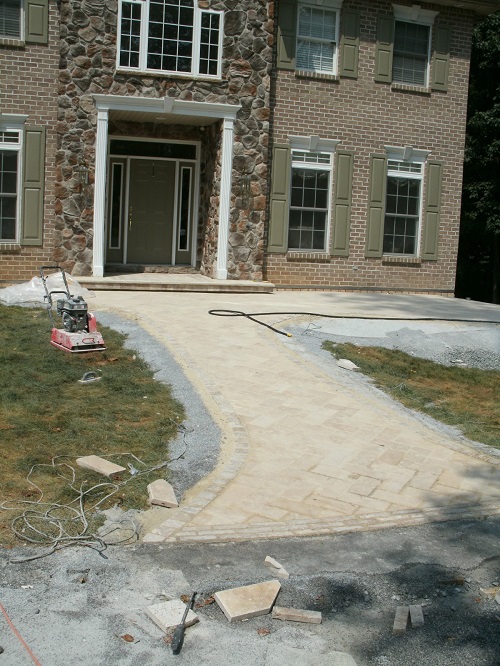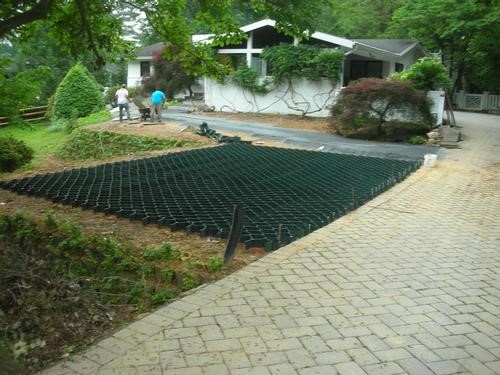Stabilization grids for large & small paver projects
Yes, even for residential pool decks or patio pavers!
Largely unrecognized throughout the construction industry in paver installation is the need for stabilization grids. These grids are also called cellular confinement systems (CCS), load support grids, or geocells. I would say that the large-scale industrial masonry world understands because they have heavy-duty architects working on road projects, those that require forethought, and longevity. On small to mid-size projects ie: parking lots to driveways, backyard patios, or pool deck paver projects, it typically is not a consideration to use stabilization grids.
Stabilization equals Longevity of Paver Installations
Stabilization is at the heart of the project when it comes down to the longevity of the installation. Anybody can lay down some stone or pavers on soil or grass and they’ll stay there for a week, a month, or a year. If you want pavers to stay in place for 10, 20, or 50 years, you need to have a stable substrate. As with interior tile projects and exterior paver projects, it’s all about the substrate. Without the proper substrate, nothing else matters because you will have failure – 100% guaranteed.

Recommended Use of Stabilization Grids
So, without the soil stabilization under a paver installation, you’re extremely likely, in almost every scenario, to have some movement. There are some very stable environmental situations that may not necessitate it. Climates that don’t have much temperature change, climates that don’t have a lot of rain, and have very compact sandy soil, are where you will not get a lot of movement underneath. As you know, that is a small portion of the world we live in that has that kind of climate.
So, conversely, if you have a lot of rain, if you have a lot of temperature change, particularly if you have a lot of cycling in freeze/thaw, and that’s the real killer, you’re going to have movement in your substrate. When you have movement in your substrate, you are going to have movement above your substrate because the substrate is what is holding your stone or pavers. For that reason, stabilization grids are recommended.



Paver Installation on Concrete Slab with Stabilization Grids
When you have a concrete slab, it’s the adage, it’s not IF your slab will crack or fail, it’s WHEN. Concrete slabs are extremely prone to failure because they are asked to perform very unforgiving and next-to-impossible tasks…to endure movement underneath them without cracking or failing. And, again, when you have movement underneath, you’re going to have the material on top crack and fail. Even the concrete itself is prone to failure without movement from underneath because of heat, especially in hot climates, and or cold or thermally cycling climates, where it gets cold then hot, cold then hot. The slabs will expand and contract according to the heat and cold they are exposed to and particularly, the cycling of heat & cold, heat & cold.
Small concrete slabs, for sidewalk sections 3’x3’ or 4’x4’ are not a big concern. Unfortunately, enough people do not put on expansion joints, they use control joints, which when it fails, fail along the control joint. A control joint is nothing more than a little line cut into the surface of the concrete making it a little bit weaker on that line so if it cracks, the crack goes along that line that was cut into it. So, it’s a prettier failure. The concrete slab is not the best solution.
If there are no elevation problems or choose to raise your elevation, it’s perfect to put a grid down on top of the existing concrete slab and put pavers on top of that.
Benefits of using STABILIZATION GRIDS
When there is failure such as washing out from too much rain underneath, and without a properly compacted substrate, you can have the substrate washing out. This happens from normal flooding, heavy floods, and the constant flow of water eventually eroding the substrate and gravel. A stabilization grid (or cellular confinement system) will hold the substrate in place so that it’s not possible to wash out. The gravel can’t travel through the walls of the grid, so it holds it all together and in place.
Use stabilization grids to combat the freeze-thaw danger
One of the bigger dangers is the freeze/thaw expansion and contraction issue that is extremely common in the climates of the upper forty-eight states in America and around the world. When you have snow and wintry weather, warm weather, then freezing weather, warm weather, and moisture-cycling, the moisture gets underneath the pavers and freezes. And, as we all know, when you look at ice cubes in your freezer, they all have a hump in them because when water freezes, it expands. So, you’re going to get the substrate holding water. If there is quick freezing overnight, the water will expand and therefore, your whole installation will heave up a little bit.
When it heaves down, when you use the grids, the grids will hold it in place instead of it shifting a little bit every time. When it shifts a little bit every time, from heaving then relaxing, heaving then relaxing, heaving then relaxing, you can imagine things will start to spread out over many cycles and next thing you know your pavers are 1/8” apart then ¼” apart, next thing you know, they have those openings and more water attacking it and now you have bigger gaps for the water to go in and turn to ice and more washout issues, etc. The whole thing kind of goes to hell without the use of a stabilization grid or cellular confinement system.
For further technical information, go to celltekdirect.com or https://www.landscapediscount.com/Geocell-Ground-Grid-Paver-LSG-6-p/lsg-6.htm
Installation Video: https://www.youtube.com/watch?v=hE_OHBCkmwI&t=297s
Are you looking for different exterior stone options? Gothicstone is here to help. Contact us today to find out more about our products so we can value-engineer your stone solution. We look forward to providing you with natural stone materials to help make your client’s outdoor area an exclusive living space.